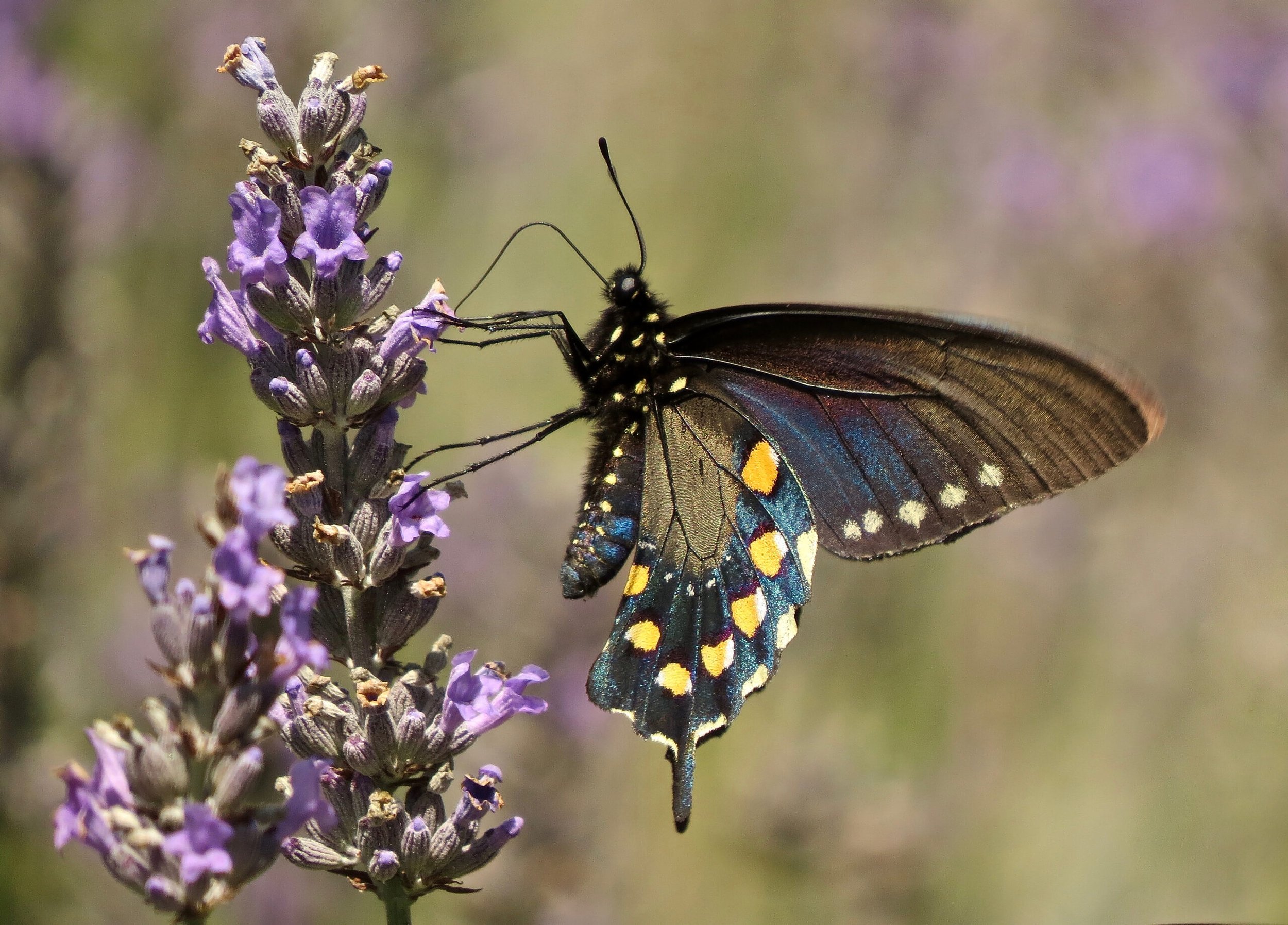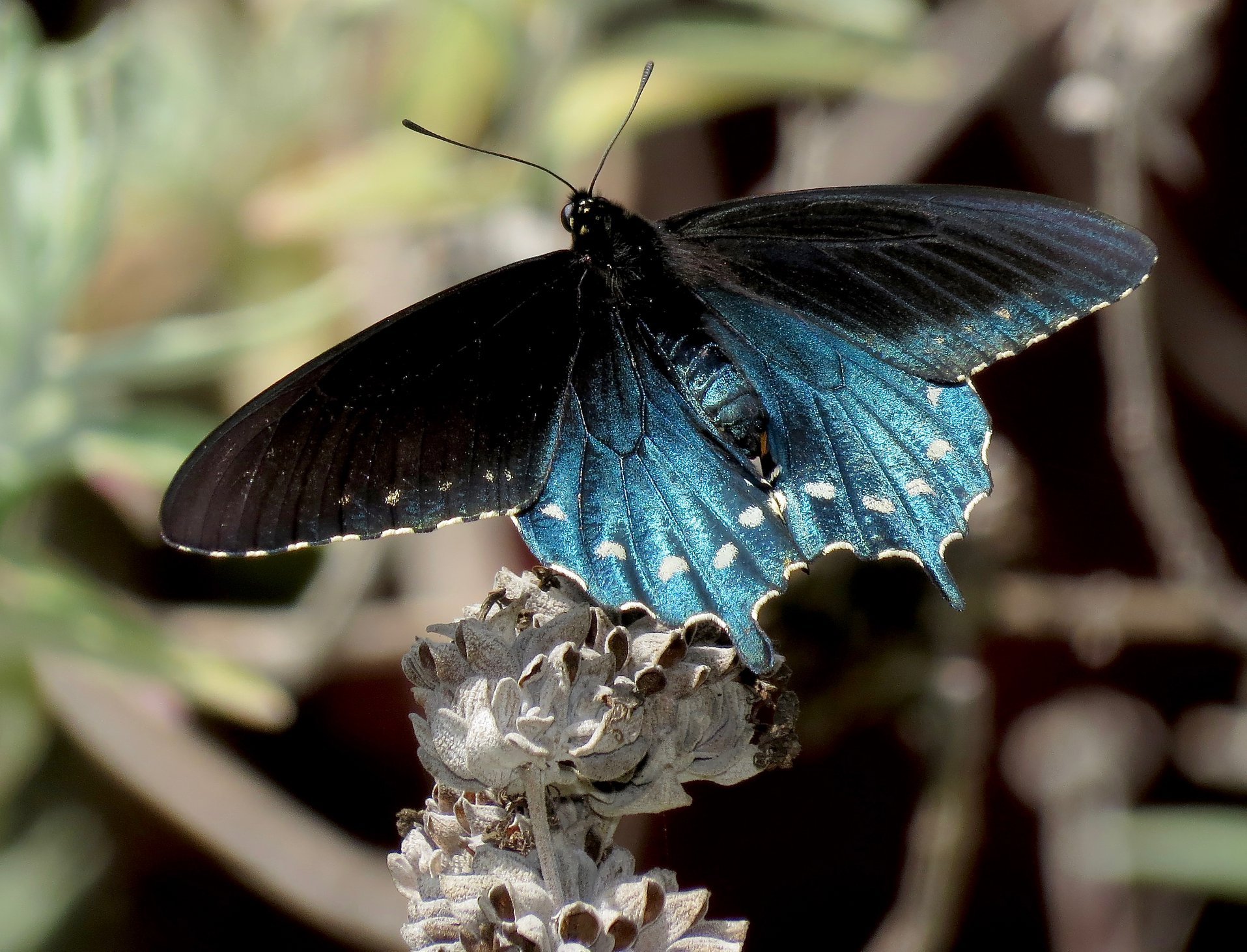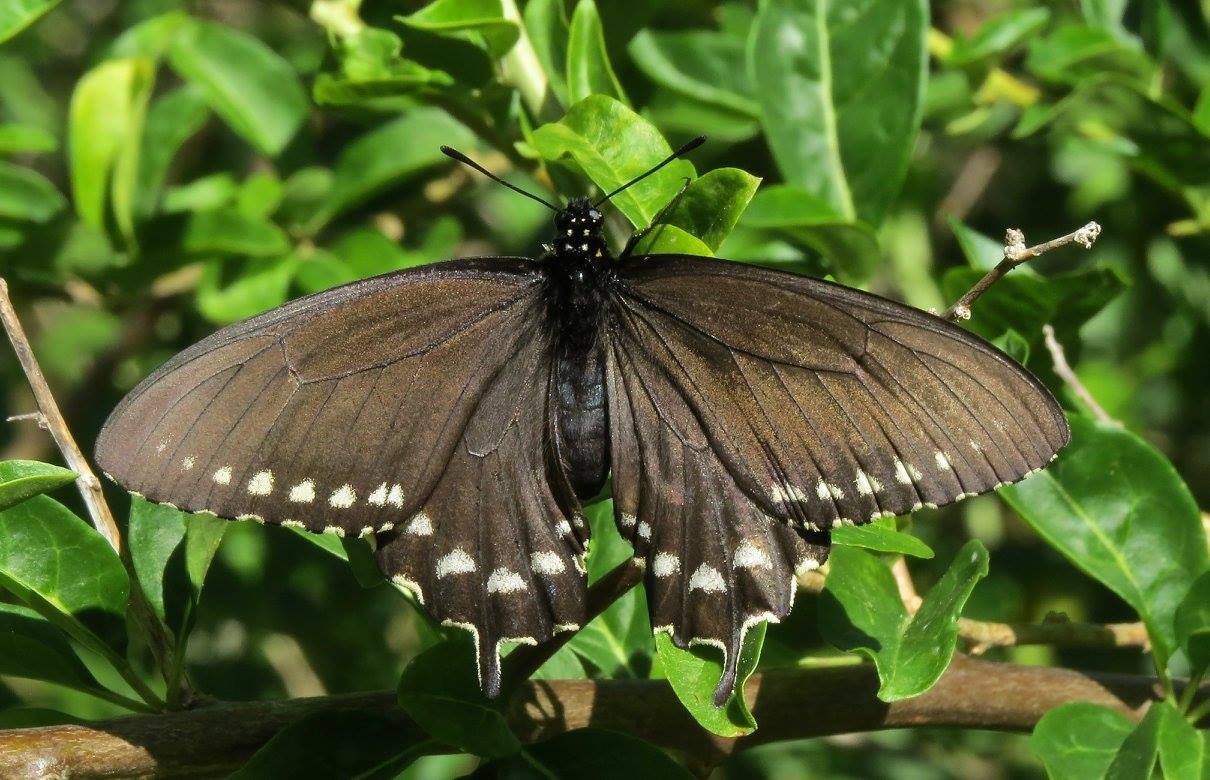California Pipevine Swallowtail (Battus philenor hirsuta) is a large butterfly, with a wingspan of 2.75 to 5 inches. It can be seen from March to October. Numbers peak in April-May. Host plants are Pipevines; in California, we have only one native Pipevine, California Pipevine (Aristolochia californica).
Eggs are laid in clusters, both on the stem and on leaves, but always close to the tender shoot tips. Caterpillars sequester aristolochic acids from the Pipevine plant, which makes them, as well as the adult butterfly, toxic to vertebrate predators. It overwinters as a chrysalis, and so adults are seen flying in March even before new leaves appear on the bare vines of the host plant. Overwintering chrysalises do not necessarily eclose the next spring; sometimes the butterfly will eclose after three or four years! Adults typically live for a month.
The egg-laying behavior of Pipevine Swallowtails is somewhat unique among butterflies (even among Swallowtails). The female conducts a very extended due diligence before choosing which shoot it will lay eggs on. As you read the description below, contrast the Pipevine Swallowtail with the Anise Swallowtail, which typically flies in to the host plant, chooses a spot, lays an egg, and flies off again, sometimes in less than 10 seconds.
A female Pipevine Swallowtail will typically first fly several low circuits above the host plant. Next, it will do a couple of touchdown circuits, where it briefly alights on maybe 15 or 20 different leaves. Most will be leaves of the host plant, but a few times it will land on the host plant’s host plant (the bush that the Pipevine is twined around). Female butterflies are equipped with a scratch-and-sniff chem lab -- in the form of chemoreceptors on their legs and antennae -- that they use to identify whether scratching a given plant causes it to emit the volatile organic compounds that should be emitted by its host plant.
The female then shortlists 8 to 12 different spots on the host plant. It will do multiple touchdown circuits -- often 3 or 4, but sometimes more -- where it touches down in turn on each spot, sampling its chemical composition repeatedly. Only then does it choose the spot where its precious cargo of eggs will be laid.
For most butterflies, chrysalises can be very hard to find. For their own protection, when caterpillars are ready to pupate, they move away from the host plant they were feeding on. Typically, they travel a random distance in a random direction, so there is no systematic way to search for chrysalises. At the Garden, we have a small shed on which California Pipevine Swallowtail caterpillars preferentially pupate, for some reason. The shed is on the upper path, on the right, just before the Channel Island section. The chrysalises are typically found near the roofline. As of August 2025, 4 chrysalises can be seen from the path, and 5 more on the adjacent wall (the one with a door). Two of these 9 chrysalises are green, the rest are brown. Photographs of 11 chrysalises (and some of the corresponding caterpillars) can be seen in this Facebook album. (Update: one of the green chrysalises has turned brown as of August 15th. That’s not supposed to happen. It remains to be seen whether it is diseased in some way or parasited.)
Whether a chrysalis turns out green or brown depends on several interacting factors. The color of the surface they are pupating on comes into play. In addition, for some reason, it also matters whether the pupation surface is smooth or rough. Smooth surfaces favor a green chrysalis, rough surfaces favor a brown one. However, when the days get short, that overrides color and texture, and gives rise to a brown chrysalis regardless (since the chrysalis is likely to overwinter, and brown offers the best camouflage over the winter).
Pipevine Swallowtails are found across North America and Central America, but this subspecies is endemic to California.
Video captions
For videos, we cannot embed captions like with photographs. Here are the captions for the two videos below.
Egg-laying *
This video shows the butterfly touching down at several different spots, some more than once, before it finally starts to lay eggs 25 seconds into the video.
Caterpillar, moving away from host plant to pupate *
When caterpillars are ready to pupate, they move away from the host plant to find a good spot somewhere else.
The first part of this video is hilarious for the speed at which the caterpillar moves. Not sure why it is doing that; I've never seen a caterpillar move so fast.
At the end, it demonstrates the dogged instinct to just keep on moving away from the host plant, no matter how treacherous the terrain may be. It keeps slipping and sliding, but keeps on keeping on.
I was really hoping to track it to the spot it chose for pupation, but I eventually lost sight of it.
One thing worth noting is that there is no sense of searching. The caterpillar had already decided which direction it was going to go in. And, at least while it was out in the open, and vulnerable, it is just sprinting. There may (or may not) have been more indecision and cautious searching later.
















